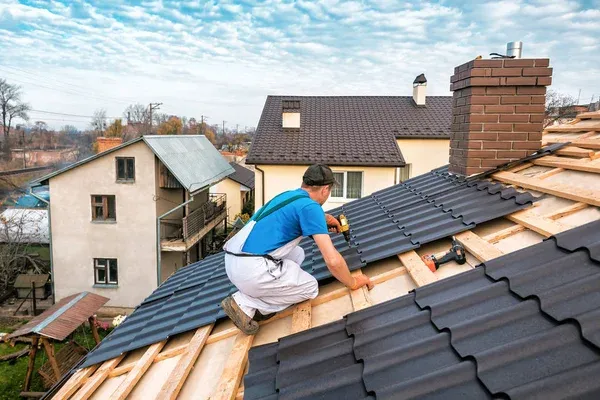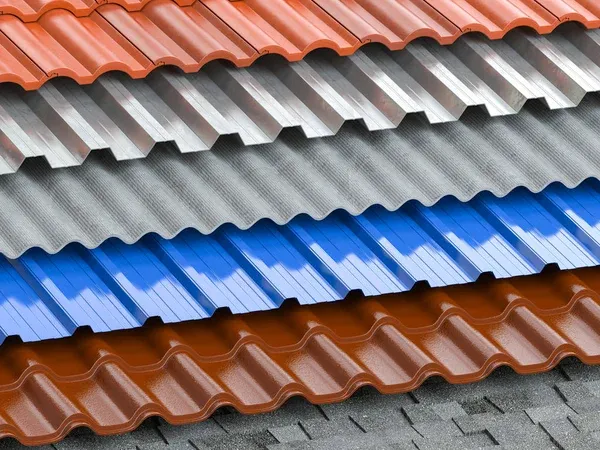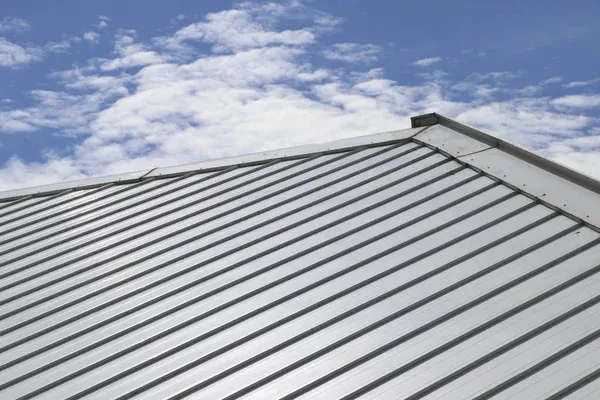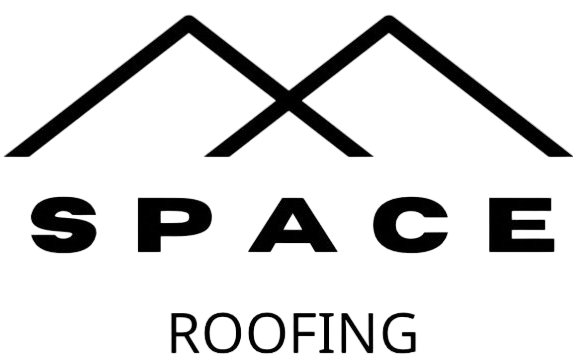Metal roofing has gained immense popularity due to its durability, energy efficiency, and aesthetic appeal. But a key question that many homeowners have is, how long does a metal roof last? In this article, we will explore the lifespan of metal roofs, factors that impact their longevity, and how they compare to other common roofing materials like shingles. Understanding the longevity of a metal roof helps in making an informed decision when choosing the right roofing material for your home. We’ll also discuss how Space Roofing offers expert solutions for installing and maintaining metal roofs to ensure their maximum lifespan.
Metal Roof Lifespan Overview
A well-installed metal roof can last anywhere from 40 to 70 years, making it one of the longest-lasting roofing materials available today. The longevity of a metal roof is attributed to its robust material and resistance to weather-related damage. Compared to traditional roofing options, such as asphalt shingles, metal roofs require minimal maintenance while providing superior protection against environmental factors. Space Roofing provides professional installation services that ensure your metal roof reaches its full lifespan potential.
Average Lifespan of Metal Roofs in the United States
In the United States, the average lifespan of a metal roof varies depending on factors like climate, installation quality, and maintenance. On average, a metal roof can last between 50 and 70 years, significantly outlasting traditional asphalt shingles, which typically last 20 to 30 years. Space Roofing uses high-quality materials and professional installation techniques to ensure maximum durability for metal roofs.
Metal Roof Lifespan by Region

How Long Does a Metal Roof Last in Different Climates
The lifespan of a metal roof can vary significantly based on the climate of the region. For example, in Florida, metal roofs are subject to high humidity, heavy rainfall, and hurricanes, which can impact their longevity. However, with proper maintenance, a metal roof in Florida can still last up to 50 years. In Texas, especially in cities like Dallas and Plano, metal roofs are exposed to intense heat and occasional hailstorms. Despite these conditions, metal roofs can last between 40 and 60 years, thanks to their heat resistance and strength. Space Roofing provides maintenance services that help homeowners extend the lifespan of their metal roofs in challenging climates.
How Long Does a Metal Roof Last in Coastal Areas?
Coastal areas, such as island regions of the United States, present unique challenges for metal roofs due to exposure to salty air and high humidity. Metal roofs in these areas are designed to resist corrosion and withstand the harsh coastal climate. With proper maintenance, a metal roof in a coastal area can last between 40 and 60 years. Space Roofing recommends regular inspections and maintenance to protect against salt-induced corrosion.
Metal Roof Longevity Compared to Other Roofing Materials

Metal Roof vs Shingle Roof Longevity
When comparing metal roofs to shingle roofs, metal roofs have a clear advantage in terms of longevity. Shingle roofs typically last between 20 and 30 years, while metal roofs can last up to 70 years. This significant difference in lifespan makes metal roofs a more cost-effective option in the long run. Additionally, metal roofs require less maintenance and are more resistant to environmental factors like wind and hail. Space Roofing specializes in installing both metal and shingle roofs, helping you choose the best option for your needs.
How Long Does a Shingle Roof Last?
Shingle roofs are one of the most common roofing materials due to their affordability and ease of installation. However, they have a shorter lifespan compared to metal roofs, usually lasting between 20 and 30 years. Shingle roofs require more frequent maintenance and are more susceptible to damage from wind, hail, and temperature fluctuations. Space Roofing can help you decide if a shingle roof or a metal roof is the right choice for your home.
Factors Affecting Metal Roof Longevity
Several factors affect the longevity of a metal roof, including the type of metal used, the quality of installation, and the maintenance schedule. Steel, aluminum, and tin are common materials used for metal roofs, each with different properties that impact their lifespan. The quality of the installation also plays a crucial role in determining how long a metal roof will last. Space Roofing uses experienced installers and high-quality materials to ensure that your metal roof is built to last.
Material Types and Their Impact on Lifespan
The type of metal used in a roof can significantly impact its lifespan. Steel roofs are known for their strength and durability, often lasting 40 to 70 years. Tin roofs are less common but can last up to 50 years with proper care. Space Roofing offers different metal roofing options and helps you choose the material that best suits your climate and budget.
Pros and Cons of Metal Roofs
Metal roofs offer many advantages, including longevity, durability, and energy efficiency. However, they can be more expensive to install compared to shingle roofs and may require specialized maintenance. In Florida, metal roofs are particularly advantageous due to their resistance to wind and moisture, but they may be prone to rust if not properly maintained. Space Roofing provides comprehensive roofing services, including maintenance to help mitigate any disadvantages of metal roofs.
Are Metal Roofs High Maintenance?
Metal roofs are generally low-maintenance compared to other roofing materials. They require occasional inspections to ensure that fasteners are secure and there are no signs of corrosion or damage. Regular maintenance can help extend the lifespan of a metal roof. Space Roofing offers maintenance plans to keep your metal roof in top condition with minimal effort.
Costs and Maintenance Considerations

How Much Does a Metal Roof Cost?
The cost of a metal roof can vary depending on the type of metal used, the size of the roof, and the complexity of the installation. On average, metal roofs are more expensive than shingle roofs, but their longevity and low maintenance requirements make them a cost-effective option in the long term. Space Roofing provides competitive pricing and high-quality installation to ensure that you get the best value for your investment.
When Should You Not Use a Metal Roof?
While metal roofs are suitable for many climates and homes, there are situations where they may not be the best choice. For instance, in areas with extremely cold climates, metal roofs may be prone to ice dams if not properly insulated. Space Roofing can help you assess whether a metal roof is the right option for your specific needs.
Myths and Common Concerns About Metal Roofs

Do Metal Roofs Attract Lightning?
One common myth is that metal roofs attract lightning. In reality, metal roofs do not increase the likelihood of a lightning strike. Instead, they are non-combustible and can help dissipate the energy safely if struck. Space Roofing ensures that all metal roofs are properly grounded for safety.
Conclusion
In conclusion, metal roofs offer a long lifespan, ranging from 40 to 70 years, depending on factors like material type, installation, and climate. Their durability, low maintenance, and energy efficiency make them an excellent choice for homeowners. Choosing a reliable roofing company, like Space Roofing, can help ensure your metal roof provides optimal performance for decades.
Add a soft call to action to contact Space Roofing for a consultation or an assessment to determine if a metal roof is the best choice for your home. Keep it natural and include it once in the introduction and once in the conclusion.
FAQs
How long does a metal roof last on average?
A metal roof typically lasts between 40 to 70 years, depending on factors such as material quality, installation, and maintenance. Proper upkeep can significantly extend the roof’s life, making it a durable and cost-effective choice for homeowners. On average, a metal roof lasts between 40 to 70 years, depending on factors such as material, installation, and maintenance.
Do metal roofs require a lot of maintenance?
Metal roofs are low-maintenance compared to other roofing materials. They need occasional inspections and minor repairs to address any loose fasteners or corrosion, which helps maintain their longevity and performance. Metal roofs require minimal maintenance, typically needing only periodic inspections and minor repairs.
What factors impact the lifespan of a metal roof?
Factors like climate, material type, installation quality, and regular maintenance can impact a metal roof’s lifespan. Proper installation and upkeep ensure that the roof remains durable and effective for several decades. Factors like climate, installation quality, material type, and maintenance impact the lifespan of a metal roof.
How does metal roofing compare to shingles in terms of longevity?
Metal roofs typically last up to 70 years, while shingle roofs last around 20-30 years. Metal roofs are more durable, requiring less maintenance, making them a longer-lasting and cost-effective solution for homeowners. Metal roofs last significantly longer than shingles, with lifespans of up to 70 years compared to 20-30 years for shingles.
Is a metal roof a good investment in Texas?
Metal roofs are an excellent investment in Texas due to their durability against extreme heat and hail. With proper installation and maintenance, they can last up to 60 years, offering a long-term roofing solution. Yes, metal roofs are a great investment in Texas due to their durability against extreme heat and storms.
How long does a metal roof last in coastal areas?
In coastal areas, metal roofs can last 40-60 years with proper maintenance. The salty air can cause corrosion, so regular inspections and protective coatings are essential to maximize the roof’s lifespan. In coastal areas, metal roofs can last 40-60 years with proper maintenance to prevent corrosion.
Are metal roofs suitable for all climates?
Metal roofs are adaptable to most climates, offering durability in both hot and cold weather. However, specific regions, such as those with heavy snowfall, may require additional insulation to prevent ice dams. Metal roofs are adaptable to most climates, but specific considerations may be needed for extremely cold or coastal areas.
How much does it cost to install a metal roof?
The cost of installing a metal roof is higher than shingles, averaging between $8,000 to $20,000, depending on roof size and material. However, the long lifespan and low maintenance make it a cost-effective investment over time. Metal roofs are initially more expensive than shingles, but their durability and low maintenance make them a cost-effective option.
Do metal roofs attract lightning?
Metal roofs do not attract lightning more than any other type of roofing. In fact, metal is a non-combustible material that disperses energy, making metal roofs a safer option during thunderstorms. No, metal roofs do not attract lightning and are actually safer due to their non-combustible nature.
What are the pros and cons of metal roofs in Florida?
In Florida, metal roofs offer excellent resistance to wind and rain, ideal for hurricane-prone areas. However, they may require extra coatings to prevent rust due to high humidity. With proper care, they can last up to 50 years. In Florida, metal roofs offer durability against wind and moisture but require proper maintenance to prevent rust.

